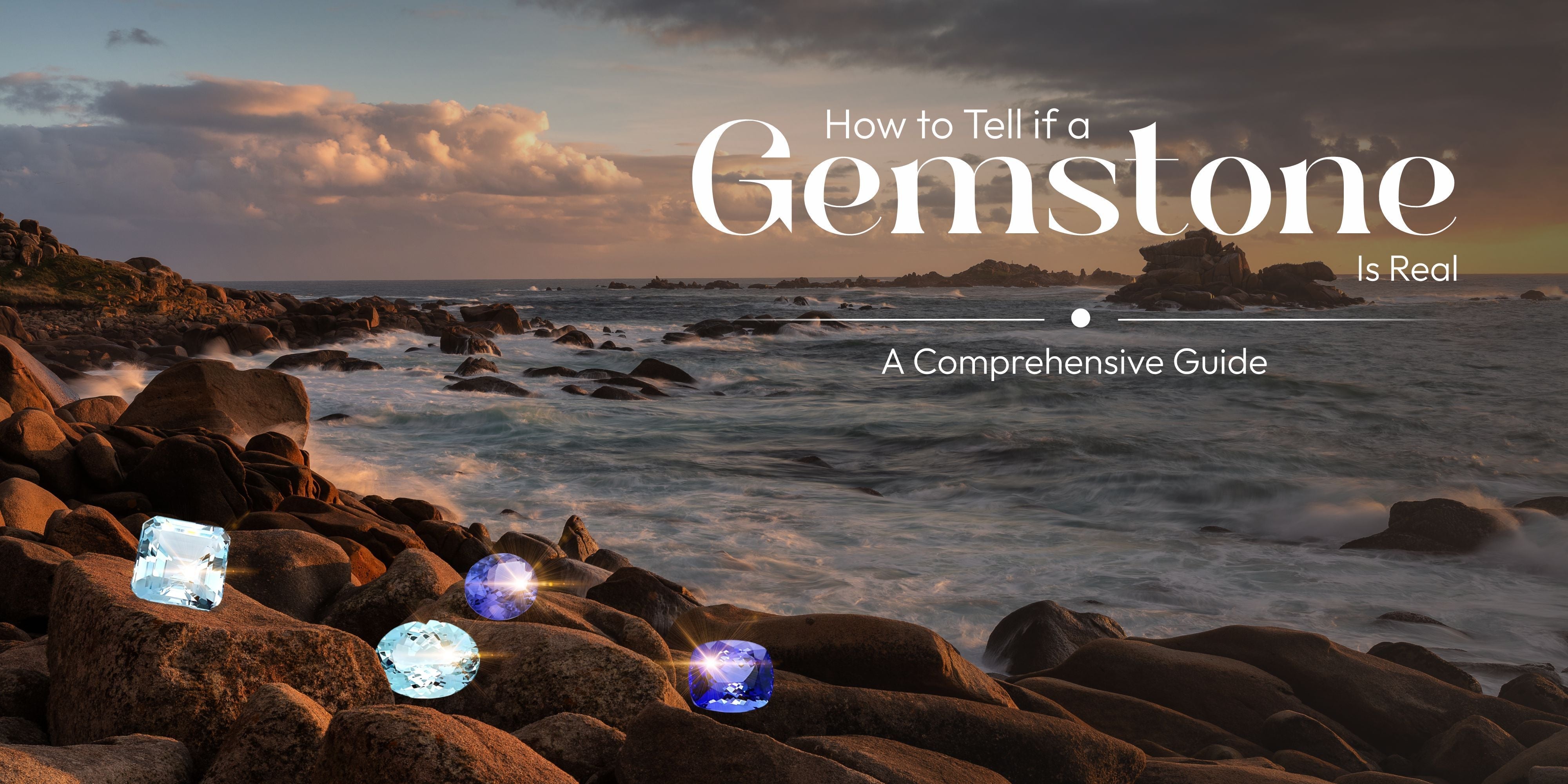Gemstones, with their captivating colors and brilliance, have fascinated humanity for centuries. Whether you're a seasoned collector or simply looking to purchase a beautiful piece of jewelry, knowing how to identify a real gemstone is crucial. Unfortunately, the market is rife with imitations, synthetics, and even outright fakes. This comprehensive guide will equip you with the knowledge and tools to confidently distinguish genuine gemstones from their less valuable counterparts.
Why is it Important to Identify Real Gemstones?
Beyond the obvious financial implications, identifying real gemstones is important for several reasons:
-
Value: Genuine gemstones hold significant value, while imitations and synthetics are worth considerably less. You want to ensure you're getting what you pay for.
-
Durability: Real gemstones possess specific hardness and durability characteristics. Knowing what you're buying allows you to care for your gemstone appropriately.
-
Appearance: While some imitations can closely resemble real gemstones, subtle differences in color, clarity, and brilliance often exist. Understanding these nuances helps in identification.
-
Ethical Concerns: Purchasing genuine gemstones from reputable sources supports ethical mining and trading practices.
Methods for Identifying Real Gemstones:
While professional gemological testing is the most reliable method, several techniques can help you assess a gemstone's authenticity at home:
1. Visual Inspection:
-
Color: Observe the gemstone's color carefully. Natural gemstones often exhibit subtle variations in color saturation and tone, while synthetics tend to have a more uniform, often overly vibrant, hue.
-
Clarity: Examine the gemstone for inclusions (internal imperfections). While excessive inclusions can detract from value, their presence can be a good indicator of a natural gemstone. Perfectly flawless gemstones are often suspect.
-
Brilliance: Natural gemstones possess a unique brilliance, or light return. They should sparkle and reflect light in a way that imitations often cannot replicate.
-
Cut and Polish: A well-executed cut and polish enhance a gemstone's brilliance. Examine the facets for sharpness and the overall finish for smoothness.
2. Hardness Testing:
-
Mohs Hardness Scale: This scale ranks minerals from 1 (talc) to 10 (diamond) based on their resistance to scratching. While you shouldn't attempt to scratch a gemstone, understanding its hardness rating can help you determine if it's likely to be genuine. For example, glass (Mohs 5.5) can scratch softer gemstones.
-
Scratch Test (Use with Caution): This involves attempting to scratch a less hard mineral with the suspected gemstone. This should only be done if you own both materials and are willing to risk damage. For example, a diamond (Mohs 10) can scratch almost anything, while a quartz (Mohs 7) can scratch topaz (Mohs 8) but not a diamond.
3. Other Tests:
-
Specific Gravity: This measures the density of a gemstone. While requiring specialized equipment, it can be a valuable tool for identification.
-
Refractive Index: This measures how light bends as it passes through a gemstone. A gemologist typically uses a refractometer for this test.
-
Fluorescence: Some gemstones fluoresce under ultraviolet (UV) light. While not conclusive, this can be a helpful indicator.
4. Professional Gemological Testing:
For definitive identification and certification, it's always best to consult a reputable gemologist or a certified gemological laboratory. They have the expertise and equipment to perform advanced tests, such as:
-
Microscopy: Detailed examination of internal structures and inclusions.
-
Spectroscopy: Analyzing how light interacts with the gemstone to determine its chemical composition.
-
X-ray Fluorescence (XRF): Identifying the elements present in the gemstone.
Tips for Buying Gemstones:
-
Buy from Reputable Dealers: Choose jewelers and gemstone dealers with a proven track record of honesty and integrity. Check online reviews and ask for recommendations. Blue Star Gemstones is a great place to start your search!
-
Ask Questions: Don't hesitate to ask about the gemstone's origin, treatment, and any certifications it may have.
-
Get a Certificate of Authenticity: A certificate from a recognized gemological laboratory provides assurance of the gemstone's identity and quality.
-
Trust Your Gut: If something feels off about a deal or a seller, it's best to walk away.
Conclusion:
Identifying real gemstones requires a combination of knowledge, observation, and sometimes, professional expertise. By understanding the techniques outlined in this guide and exercising caution when making purchases, you can confidently navigate the world of gemstones and acquire beautiful, genuine pieces that you'll cherish for years to come. Remember, when in doubt, consult a professional. Happy gemstone hunting!



